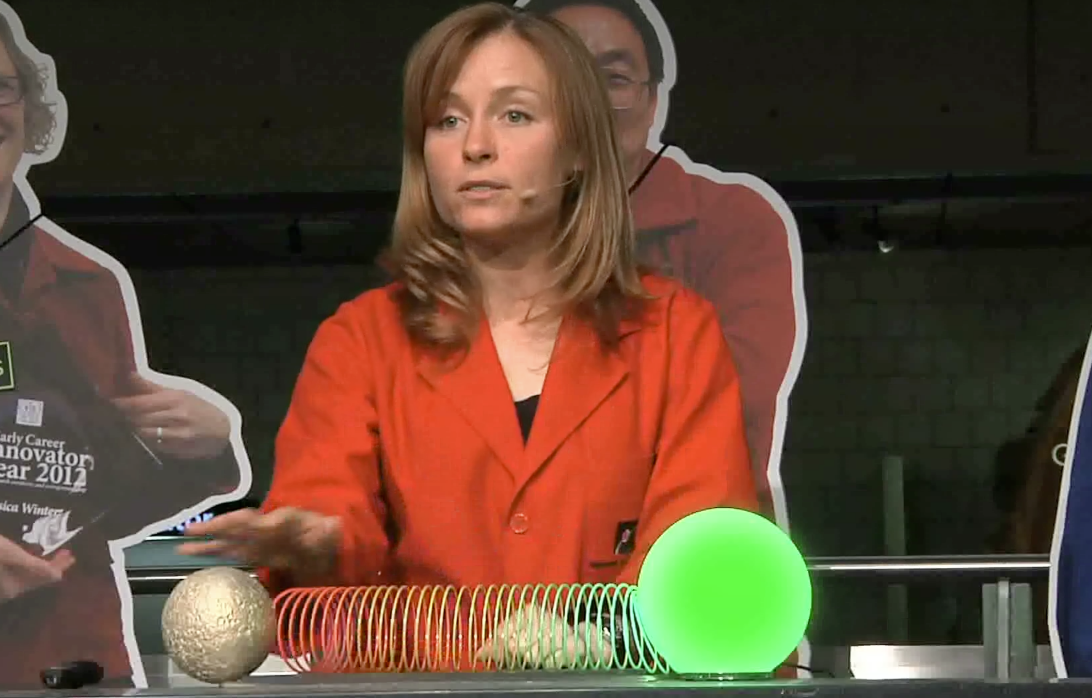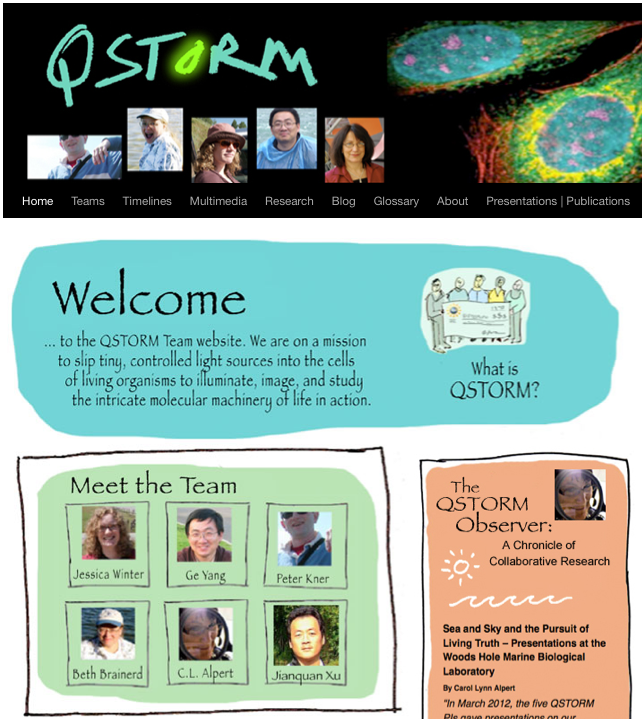DESCRIPTION
"Making Molecular Movies with QSTORM" is a public presentation that details the on-going interdisciplinary research project of a group of scientists/engineers who are collaborating to make a breakthrough in biological imaging. They are trying to make movies of the molecular machinery at work inside living cells at a greater resolution than ever before. The presentation introduces the four scientists/engineers involved in this research effort, details the limitations of current technology and imaging challenge they face, and introduces the unique approaches they are pursuing in their quest to make this imaging breakthrough. This program seeks to show nanoscale science and engineering research as a human story, and an on-going endeavor – this research project is a work-in-progress, where the outcome is not certain. The presentation uses a variety of metaphors, analogies, models, imagery, props and demonstrations to help visitors understand this complex research project.
DESCRIPTION
"Making Molecular Movies with QSTORM" is a public presentation that details the on-going interdisciplinary research project of a group of scientists/engineers who are collaborating to make a breakthrough in biological imaging. They are trying to make movies of the molecular machinery at work inside living cells at a greater resolution than ever before. The presentation introduces the four scientists/engineers involved in this research effort, details the limitations of current technology and imaging challenge they face, and introduces the unique approaches they are pursuing in their quest to make this imaging breakthrough. This program seeks to show nanoscale science and engineering research as a human story, and an on-going endeavor – this research project is a work-in-progress, where the outcome is not certain. The presentation uses a variety of metaphors, analogies, models, imagery, props and demonstrations to help visitors understand this complex research project.
TRAINING VIDEOS
OBJECTIVES
BIG IDEA
There are fundamental limits to light microscopes that limit how much resolution we have when imaging live cells, yet biologists yearn to see a cell’s molecular machinery at work. New super-resolution imaging techniques allow us to see greater detail, and researchers are on a constant quest to find new materials, tools, and techniques that give us a better view of what’s happening at the nanoscale inside living cells.
LEARNING GOALS
Recognize that there are limits to traditional light microscopy that prevent us from seeing nanoscale features in living cells.
Understand that new imaging techniques (like STORM and using Quantum Dots with STORM) are being developed to overcome these limitations in microscopy.
Learn that interdisciplinary teams collaborate to drive research forward.
NANO CONTENT MAP
Nanometer-sized things are very small, and often behave differently than larger things do.
Scientists and engineers have formed the interdisciplinary field of nanotechnology by investigating properties and manipulating matter at the nanoscale.
Nanoscience, nanotechnology, and nanoengineering lead to new knowledge and innovations that weren't possible before.
Credits
Museum of Science
Development of this product was supported by the QSTORM Research Collaborative (NSF MCB-1052733), the Center for High-rate Nanomanufacturing at Northeastern University, University of Massachusetts-Lowell, and University of New Hampshire (NSF EEC-0832785), with support from the National Science Foundation. Packaging and dissemination of this product for the NISE Network was supported by the National Science Foundation under Award Numbers 0532536 and 0940143. Any opinions, findings, and conclusions or recommendations expressed in this product are those of the authors and do not necessarily reflect the views of the Foundation.
Creative Commons Attribution Non-Commercial Share Alike 3.0 United States (CC BY-NC-SA 3.0 US).
View more details

NISE Network products are developed through an iterative collaborative process that includes scientific review, peer review, and visitor evaluation in accordance with an inclusive audiences approach. Products are designed to be easily edited and adapted for different audiences under a Creative Commons Attribution Non-Commercial Share Alike license. To learn more, visit our Development Process page.


